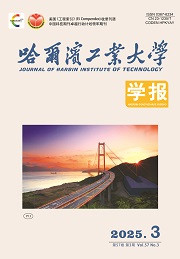| 引用本文: | 王玉莹,支丽玲,马鑫欣,王硕,李激.好氧颗粒污泥胞外聚合物组分特征分析[J].哈尔滨工业大学学报,2020,52(2):153.DOI:10.11918/201811123 |
| WANG Yuying,ZHI Liling,MA Xinxin,WANG Shuo,LI Ji.Characterization of extracellular polymeric substances from aerobic granular sludge[J].Journal of Harbin Institute of Technology,2020,52(2):153.DOI:10.11918/201811123 |
|
| |
|
|
| 本文已被:浏览 1536次 下载 1434次 |

码上扫一扫! |
|
|
| 好氧颗粒污泥胞外聚合物组分特征分析 |
|
王玉莹1,支丽玲1,马鑫欣1,王硕1,2,3,李激1,2,3
|
|
(1.江南大学 环境与土木工程学院,江苏 无锡 214122; 2.江苏省厌氧生物技术重点实验室(江南大学),江苏 无锡 214122;3.江苏省高校水处理技术与材料协同创新中心,江苏 苏州 215009)
|
|
| 摘要: |
| 为鉴定好氧颗粒污泥(aerobic granular sludge, AGS)中胞外聚合物(extracellular polymeric substances, EPS)的组成成分和特性,以某污水处理厂好氧池活性污泥(activated sludge-wastewater treatment plant, AS-WWTP)作为接种污泥,采用实验室配水和污水处理厂进水分别培养出AGS-LAB和AGS-WWTP,并对AGS中的EPS开展对比分析.结果表明,单位MLVSS EPS质量分数由接种污泥的84.36 mg/g分别增加到AGS-LAB的122.49 mg/g 和AGS-WWTP的128.23 mg/g,主要以TB-EPS(tightly bound-EPS, TB-EPS)层蛋白质增加为主,多糖质量分数变化较小.与接种污泥相比,两种AGS中芳香族类氨基酸、酪氨酸/色氨酸类蛋白和天冬氨酸蛋白质量分数明显提高.3种污泥样品EPS中亲水性氨基酸质量分数较低,疏水性氨基酸质量分数较高,两种AGS中氨基酸总量较接种污泥平均升高28.31%.此外,载体物质十六甲基环八硅氧烷和具有交联作用的二乙烯苯只存在于两种AGS的EPS中,表明它们在缩短污泥颗粒化进程和提高AGS的结构稳定性中具有潜在作用. |
| 关键词: 好氧颗粒污泥 胞外聚合物 蛋白质 多糖 水解氨基酸 |
| DOI:10.11918/201811123 |
| 分类号:X703 |
| 文献标识码:A |
| 基金项目:国家水体污染控制与治理科技重大专项(2017ZX07202-1,7ZX07202001-005); 国家自然科学基金 (51408264) |
|
| Characterization of extracellular polymeric substances from aerobic granular sludge |
|
WANG Yuying1,ZHI Liling1,MA Xinxin1,WANG Shuo1,2,3,LI Ji1,2,3
|
|
(1.School of Environment and Civil Engineering, Jiangnan University, Wuxi 214122, Jiangsu, China; 2.Jiangsu Key Laboratory of Anaerobic Biotechnology(Jiangnan University), Wuxi 214122, Jiangsu, China; 3. Collaborative Innovation Center of Water Treatment Technology and Material of Jiangsu Colleges, Suzhou 215009, Jiangsu, China)
|
| Abstract: |
| To identify the composition and properties of extracellular polymeric substances (EPS) in aerobic granular sludge (AGS), activated sludge from aerobic tank of a wastewater treatment plant was used as seed sludge in this study. AGS-LAB and AGS-WWTP were cultured from laboratory synthetic wastewater and wastewater treatment plant influent respectively, and the EPS in the two types of AGSs was compared and analyzed. Results showed that the EPS content increased from 84.36 mg/g MLVSS of seed sludge to 122.49 mg/g MLVSS of AGS-LAB and 128.23 mg/g MLVSS of AGS-WWTP, and the protein content in TB-EPS greatly increased while the polysaccharide content slightly changed. The contents of aromatic amino acids, tyrosine/ tryptophan proteins, and aspartic acid proteins in the AGSs were remarkably higher than those in seed sludge. The hydrophilic amino acids contents in three kinds of sludge were relatively lower, while the hydrophobic amino acids presented higher contents. In addition, the total amount of the amino acids in AGSs increased by 28.31% on average. Moreover, the carrier substance hexamethyl-cyclooctasiloxane and ethylene benzene with crosslinking role only existed in the EPS of two AGSs, indicating that they played potential roles in shortening the granulation process of seed sludge and improving the structural stability of AGS. |
| Key words: aerobic granular sludge extracellular polymeric substances protein polysaccharides hydrolytic amino acids |
|
|
|
|







